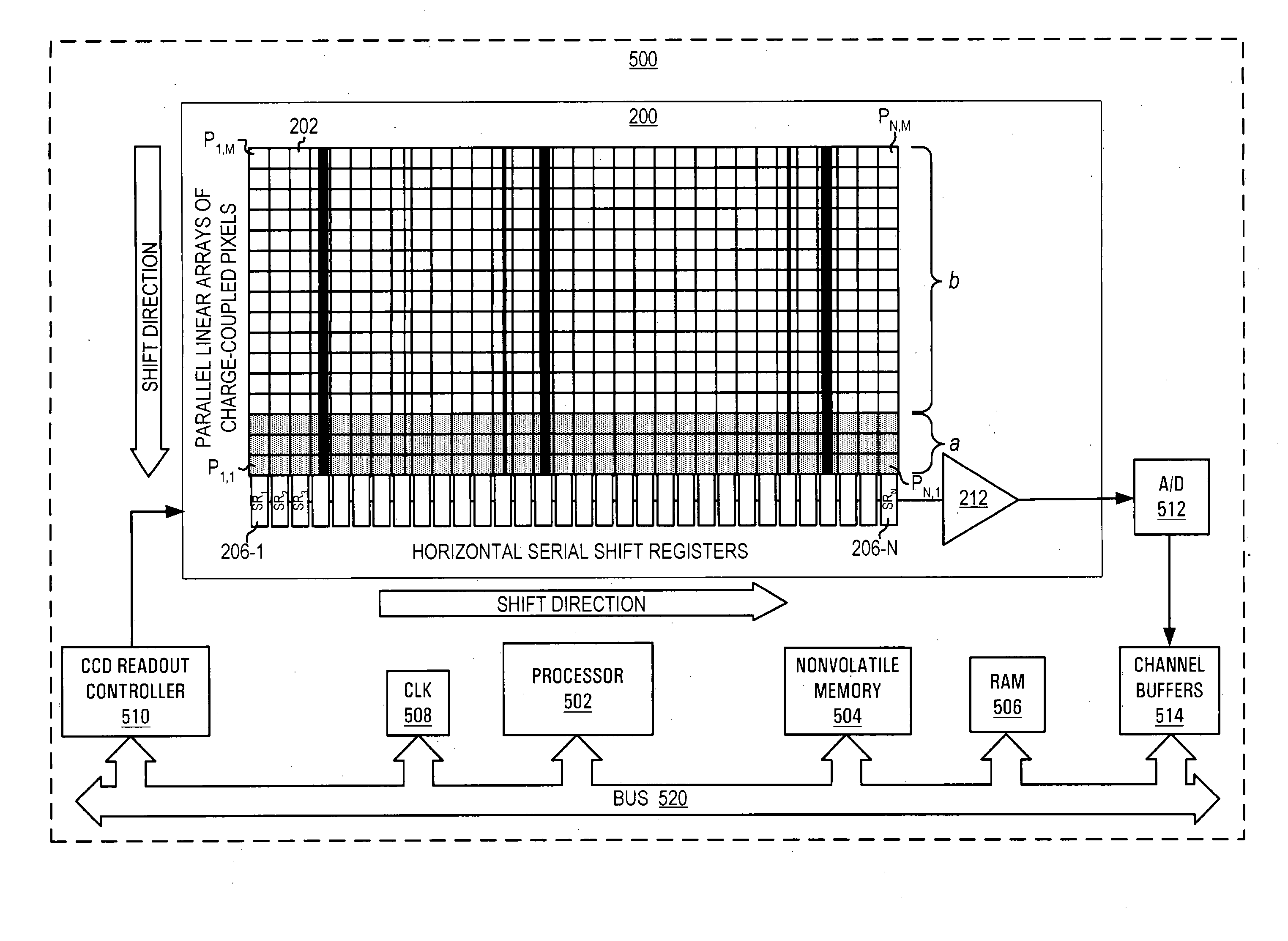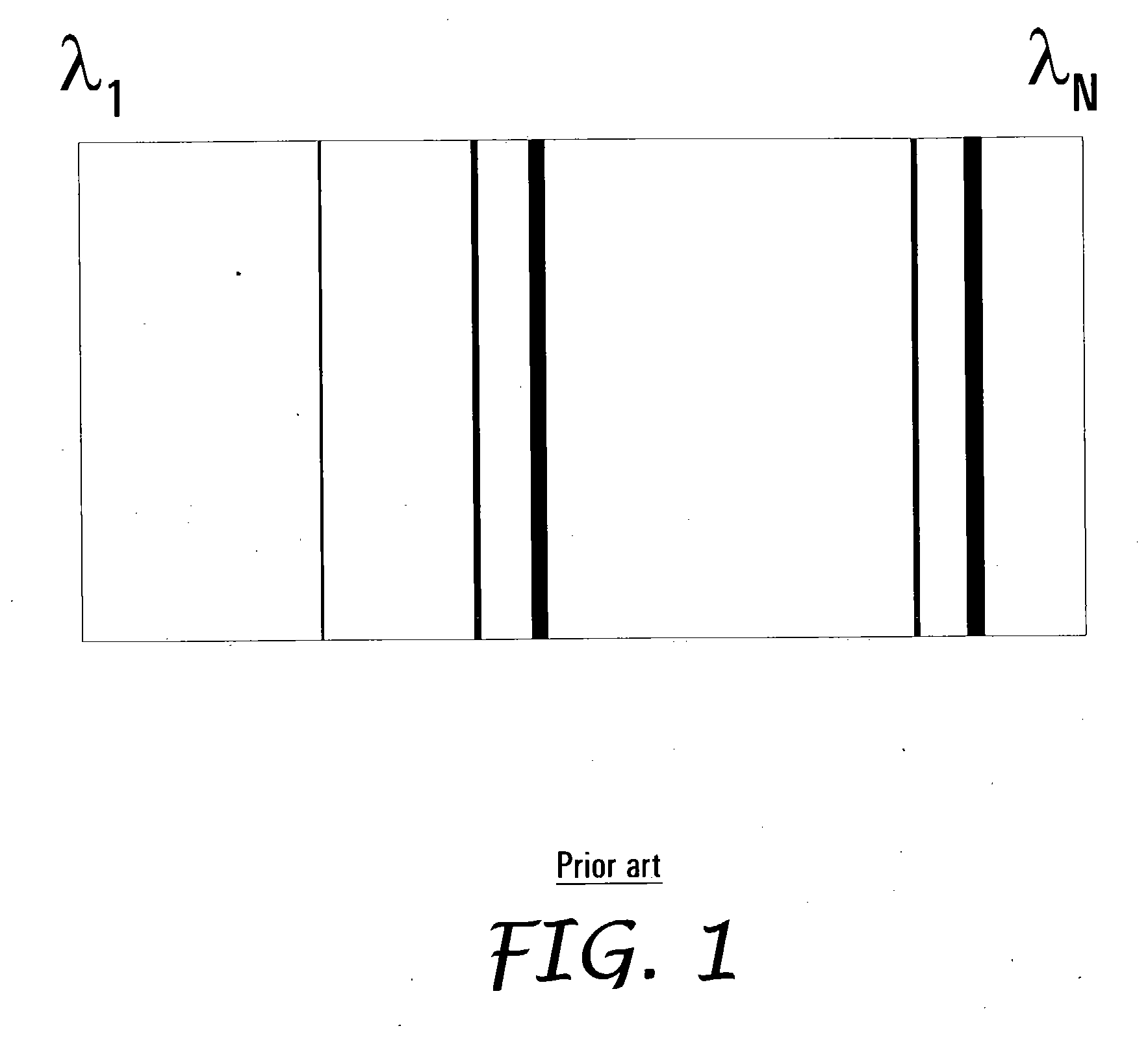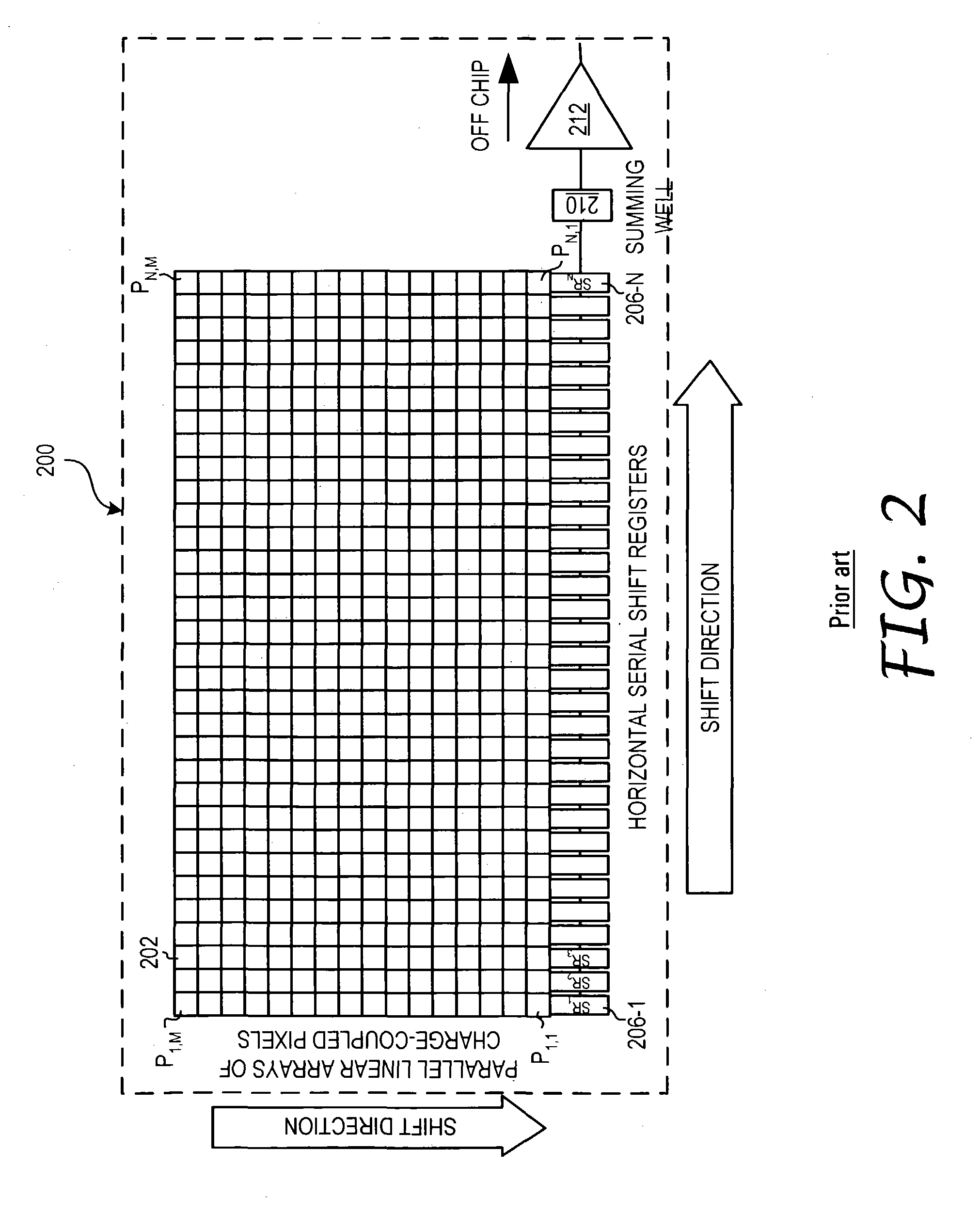Apparatus and method for enhancing dynamic range of charge coupled device-based spectrograph
a technology of charge coupled device and spectrograph, which is applied in the field of optical imaging, can solve the problems of preventing the use of spectrographs in some demanding applications, performance limitations of available detector arrays, and dynamic range limitation,
- Summary
- Abstract
- Description
- Claims
- Application Information
AI Technical Summary
Problems solved by technology
Method used
Image
Examples
Embodiment Construction
The invention being disclosed here is a spectrograph consisting of an optical dispersing and imaging system, a CCD for light detection, and a data processor. The CCD employs a heretofore unknown pixel binning method, the “two-region line binning mode,” for increasing the dynamic range over what can be achieved in the conventional line binning mode. The data processor converts the electrical signals produced in this method to a numerical or graphical representation of the light's intensity as a function of wavelength.
The presently described invention is applicable to spectrographs using a CCD with a two-dimensional array of pixels, wherein each parallel line pixels terminate in a shift register. The pixel lines may be oriented in one of the vertical (column) or horizontal (row) direction, but conventionally as a column in the vertical direction. Additionally, the present invention applicable for CCDs in which the full well capacity of the individual horizontal shift register is le...
PUM
 Login to View More
Login to View More Abstract
Description
Claims
Application Information
 Login to View More
Login to View More - R&D
- Intellectual Property
- Life Sciences
- Materials
- Tech Scout
- Unparalleled Data Quality
- Higher Quality Content
- 60% Fewer Hallucinations
Browse by: Latest US Patents, China's latest patents, Technical Efficacy Thesaurus, Application Domain, Technology Topic, Popular Technical Reports.
© 2025 PatSnap. All rights reserved.Legal|Privacy policy|Modern Slavery Act Transparency Statement|Sitemap|About US| Contact US: help@patsnap.com



